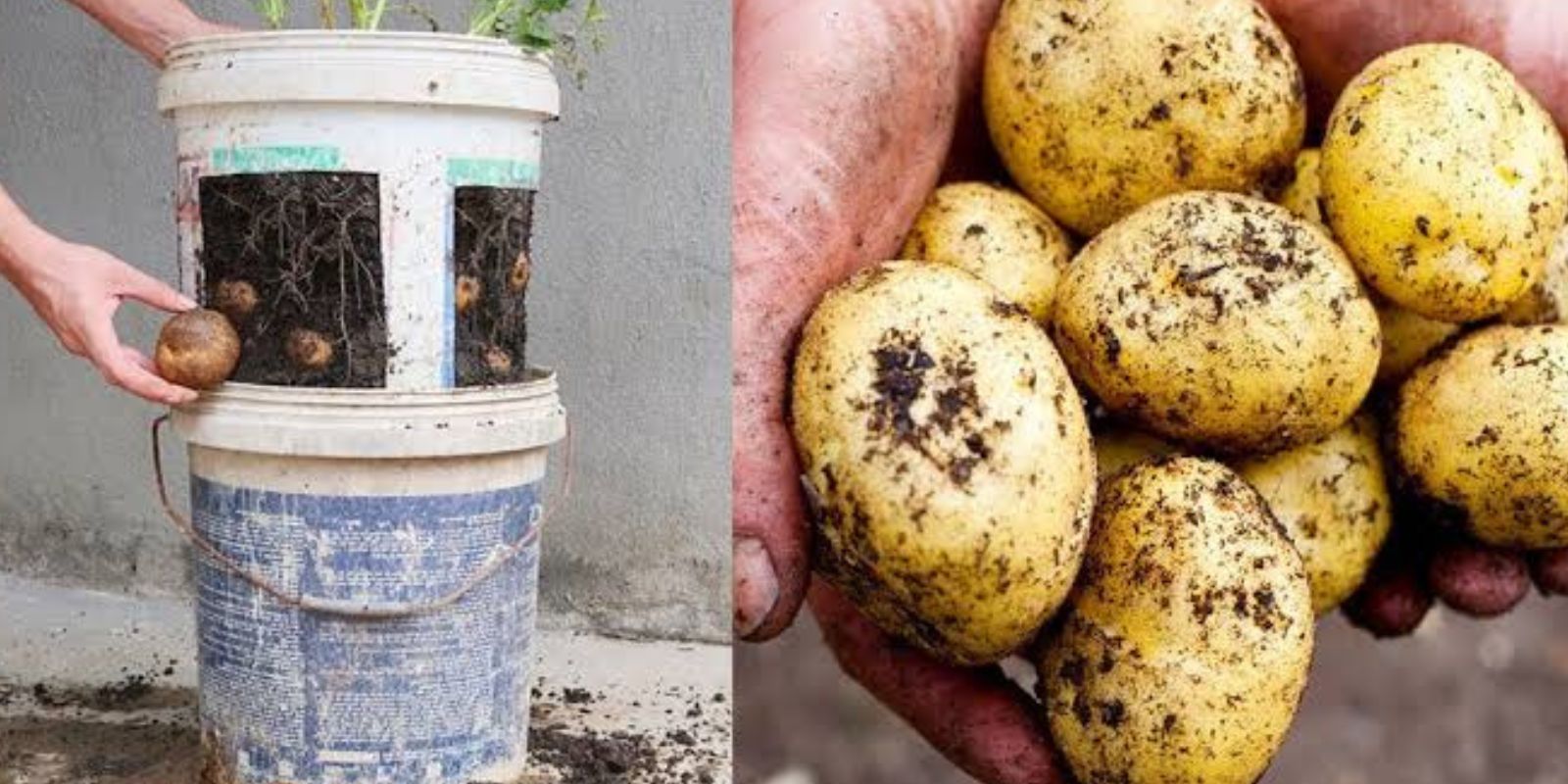Potatoes are one of the most versatile and beloved crops, making them a staple in many kitchens worldwide. But did you know you can grow potatoes in the comfort of your home using just a plastic bucket? This method is perfect for those with limited space, as it requires minimal effort and yields a satisfying harvest. Here’s a comprehensive guide to growing potatoes in a plastic bucket and ensuring a bountiful crop.
Why Grow Potatoes in a Bucket?
Growing potatoes in a bucket is an excellent alternative to traditional gardening, especially if you:
- Lack outdoor space: It’s perfect for balconies, patios, or small yards.
- Want better control: Buckets allow you to manage soil quality and protect your plants from pests.
- Enjoy a manageable process: Harvesting is as easy as dumping the bucket to reveal your crop.
Materials Needed
Before you start, gather the following materials:
- A plastic bucket (10–30 liters in capacity).
- Seed potatoes (small potatoes or larger ones cut into sections with eyes).
- Loose, well-draining soil.
- Gravel or clay pebbles for drainage.
- Fertilizer.
- A drill to create drainage holes.
Step-by-Step Guide to Growing Potatoes in a Bucket
1. Prepare the Bucket
Proper drainage is critical to prevent root rot and soggy soil.
- Drill multiple small holes at the bottom of the bucket for adequate water flow.
- Add a layer of gravel or clay pebbles (around 2–3 cm deep) to improve drainage.
2. Sprout the Potatoes
Seed potatoes should be prepped before planting:
- Place seed potatoes in a bright, well-ventilated area for 2–3 weeks to encourage sprouting.
- Wait until the shoots (sprouts) are 2–3 cm long before planting.
3. Fill the Bucket with Soil
- Add about 10–15 cm of loose, well-draining soil to the bucket. Potatoes prefer slightly acidic soil with a pH of 5.5–7.
- Mix the soil with compost or a balanced organic fertilizer for added nutrients.
4. Plant the Potatoes
- Place 2–3 sprouted seed potatoes in the bucket with the shoots facing upward.
- Cover the potatoes with another 10–15 cm of soil, ensuring the shoots remain buried.
- Water lightly to moisten the soil, but avoid overwatering.
5. Care for Your Growing Potatoes
Hilling the Plants:
- As the potato plants grow to about 10–15 cm in height, add more soil to cover the lower stems, leaving the top few leaves exposed.
- Repeat this process every few weeks until the soil level reaches just below the bucket’s rim. Hilling helps develop more tubers and prevents them from turning green.
Watering and Fertilizing:
- Keep the soil consistently moist but not waterlogged. Water deeply when the top layer of soil feels dry.
- Begin fertilizing after 4 weeks using a balanced fertilizer or one with a higher potassium content to encourage tuber growth.
Light Requirements:
- Place the bucket in a sunny location, as potatoes need at least 6–8 hours of sunlight daily.
6. Harvesting Your Potatoes
Potatoes can be harvested at two stages:
- Early Potatoes: Ready in about 8–10 weeks, typically when the plants start flowering. These are smaller, tender potatoes perfect for fresh consumption.
- Full-Size Potatoes: Harvest after 12–16 weeks, when the foliage begins to yellow and die back. At this stage, the potatoes are fully matured and can be stored for a longer period.
Harvesting Tip:
To harvest, gently tip the bucket over and sift through the soil to collect your potatoes. Brush off excess dirt, but avoid washing them if you plan to store them.
Common Mistakes to Avoid
- Skipping Drainage:
Without proper drainage, excess water can lead to root rot and suffocate the plants. - Overcrowding the Bucket:
Planting too many seed potatoes in one bucket can result in smaller tubers due to limited space and nutrients. Stick to 2–3 seed potatoes per bucket. - Inconsistent Watering:
Letting the soil dry out or overwatering can stunt potato growth. Maintain even moisture throughout the growing period. - Neglecting Hilling:
Failing to add soil as the plants grow reduces tuber production and increases the risk of green, inedible potatoes.
Benefits of Growing Potatoes in a Bucket
- Space-Saving: Ideal for urban gardeners or those with limited outdoor space.
- Easy Maintenance: Buckets provide a controlled environment, reducing weed growth and pest issues.
- Year-Round Gardening: With the right setup, you can grow potatoes indoors or in greenhouses for year-round harvests.
- Portable: Move the buckets to different spots to optimize sunlight exposure or protect them from adverse weather.
FAQs About Growing Potatoes in Buckets
1. How many potatoes can I harvest from one bucket?
On average, you can harvest 5–10 medium-sized potatoes per seed potato planted, depending on the variety and growing conditions.
2. What potato varieties work best in buckets?
Early-maturing or compact varieties like Yukon Gold, Red Norland, and Fingerlings are ideal for container gardening.
3. Can I reuse the soil?
It’s not recommended to reuse soil from potatoes, as it may contain pests or pathogens. Instead, use it for other non-solanaceous plants.
Why You Should Try Bucket Gardening Today
Growing potatoes in a bucket is an excellent way to introduce yourself to container gardening, especially if you’re short on space. It’s simple, rewarding, and provides a constant supply of fresh, homegrown potatoes. Plus, you get the joy of seeing your plants thrive from start to finish!
So, why wait? Grab a bucket, some seed potatoes, and start your gardening adventure today!
Share Your Potato Growing Journey
Have you tried growing potatoes in a bucket? Share your experiences, tips, or photos in the comments below. Let’s inspire others to embrace the magic of home gardening!


